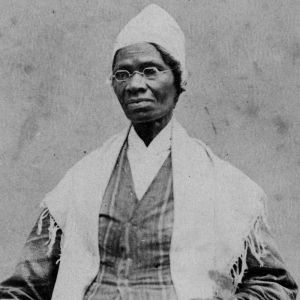Sojourner Truth

March 15, 2018
In 1797, Sojourner Truth was born in Ulster County, New York as a slave. She may have been born serving white people, but she would have a more exciting life than that in her future. Sojourner grew up to be a strong, inspiring, and religious black woman.
In 1826, Sojourner ran away from slavery with her husband, Thomas, and one of her daughters, Sophia. Sojourner actually had five children, but some of them were sold. The three went to the VanWageners’ house. The VanWageners were a part of the Underground Railroad. From 1826 to 1828, Sojourner found out that their former master, John J. Dumont, had illegally sold her son Peter. With the help of friends, she sued Dumont and freed Peter in 1828. In 1827, Sojourner went to an African-Dutch celebration called Pinkster. Pinkster is a Christian holiday. After the celebration, religion became a big part of Sojourner’s life. From then on, she would hear voices and see visions. Her spirituality made her stronger.
Around 1828, Sojourner moved to New York City with Peter and Sophia. In the city, Sojourner met a social reformer named Elijah Pierson. She joined him and they preached on the streets. Sojourner became well known for singing, praying, and preaching. She once said, “I cannot read a book, but I can read the people.” In 1843, Sojourner became a traveling preacher. Sojourner said that voices told her to sojourn Northeast and Midwest. To sojourn means to make short visits. Sojourner’s birth name was Isabella, but she changed it to Sojourner in 1843. During the Winter of 1844, Sojourner went to a community called the Northampton Association for Education and Industry, in Massachusetts. There, she met members of the abolitionist movement.
Sojourner had a very interesting life as an abolitionist. She made a lot of friends in her lifetime. Sojourner grew up to be a strong, inspiring, and religious black woman.

